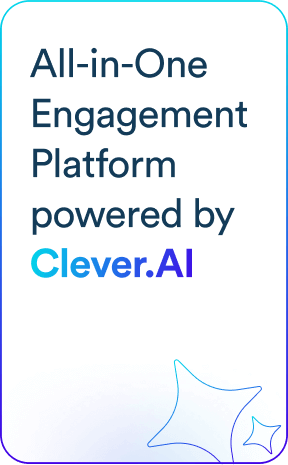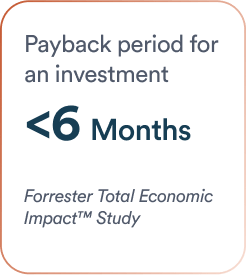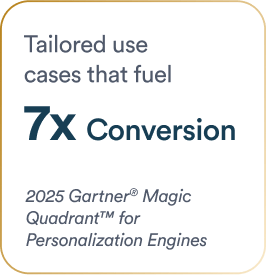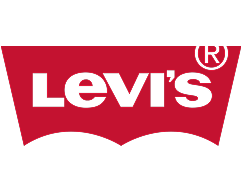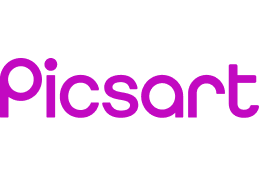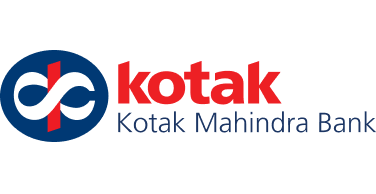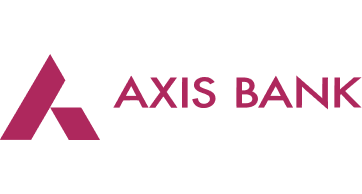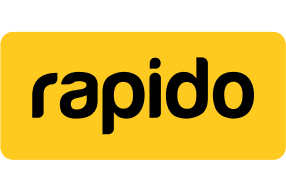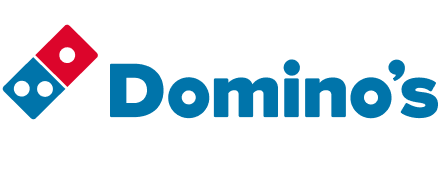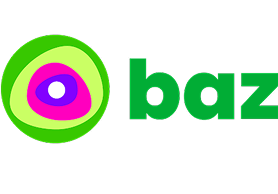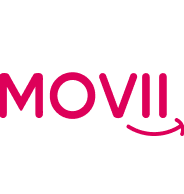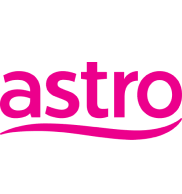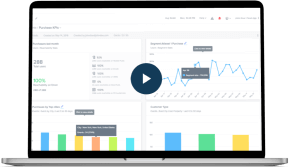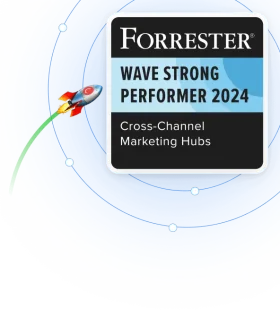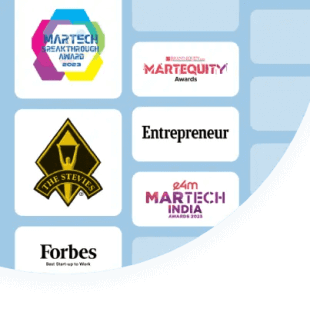Conversion rate optimization (CRO) is critical for fintech companies aiming to thrive in a rapidly evolving digital landscape. In recent years, the industry has seen groundbreaking advancements like AI-driven financial advice, widespread cloud technology adoption, and thoughtful regulatory improvements. The fintech sector is projected to expand significantly, with an expected CAGR of 25.18% from 2025 to 2033.
Yet, fintech apps currently face substantial challenges, including only a 4.5% user retention rate after 30 days and a 14% activation rate*. This highlights a critical need for strategic and effective fintech conversion rate optimization practices that convert casual users into loyal customers.
Why CRO is Important for Fintech Apps
In the fintech sector, CRO can directly drive sustainable growth and competitive advantage. The financial industry’s stringent regulations, security concerns, and heightened user sensitivity toward data privacy make fintech conversion rate optimization particularly complex, but highly rewarding when executed effectively.
For instance, fintech startup Niyo streamlined complex onboarding and improved conversions using personalized automation via CleverTap. By addressing user pain points like high forex fees, Niyo boosted conversion rates by 40% and re-engaged 12% of dormant users.
Even modest improvements in conversion rates can dramatically impact fintech business success:
- Better conversion rates lower customer acquisition costs (CAC), which is crucial in a competitive fintech environment.
- Higher conversions correlate directly with improved user experiences, enhancing customer lifetime value (CLTV) and retention.
According to CleverTap’s Fintech App Engagement Benchmark Report, 76% of fintech app users convert within 7 days, emphasizing that strong initial impressions are vital to long-term customer success.

What is a Good Fintech Conversion Rate? Benchmarks Based on Different Sectors
App conversion rate is calculated by dividing the number of app installs by the number of impressions the app listing or product page receives. For example, if 1,000 people viewed your app page and 50 installed the app, your fintech conversion rate would be 5%.
Understanding what constitutes a “good” conversion rate helps you set realistic goals and identify opportunities for improvement. The average fintech conversion rate varies significantly by sector, with the range of median conversion rates for the industry falling between 3.4% and 5%. Banking apps typically see rates between 2-5% according to recent industry data.
Cross-Sector Fintech Conversion Benchmarks
| Fintech Sector | Conversion Rate Range |
| Overall Fintech | 3.4% – 5% |
| Banking | 2% – 5% |
| Insurance | 1% – 3% |
| Investment & Wealth Management | 1% – 3% |
These figures represent industry averages, but top-performing fintech apps often achieve significantly higher rates. It’s also worth noting that you should evaluate conversion rates in context—a lower conversion rate with a higher average transaction value might be more profitable than a higher conversion rate with lower-value transactions.
Platform-Specific Performance Metrics for Fintech Apps
- iOS (App Store):
- Overall Conversion Rate: The average conversion rate across all app categories in the US App Store was 25% in the first half of 2024.
- Finance Apps: Specifically, finance apps on iOS have a higher conversion rate of 34%.
- Additional Insights: The finance category also boasts a strong direct install rate of 31%, indicating a robust brand reputation and user trust.
- Overall Conversion Rate: The average conversion rate across all app categories in the US App Store was 25% in the first half of 2024.
Back in 2022, App Store iOS conversion rates declined from 6.8% to 5.8%, according to historical benchmarks. Despite the overall platform seeing a dip, the finance app category still led with conversion rates consistently above 5%. The average impression-to-install rate across all categories at the time was just 4%, reinforcing the strength of fintech apps even in a challenging conversion climate.
- Google Play Store:
- Overall Conversion Rate: The average conversion rate across all categories on the U.S. Google Play Store was 27.3% during the first half of 2024.
- Finance Apps: Finance apps on Google Play have a lower conversion rate of 19.7%.
- Additional Insights: The finance category’s direct install rate on Google Play is 27%, slightly lower than on iOS, reflecting differences in user acquisition dynamics between platforms.
- Overall Conversion Rate: The average conversion rate across all categories on the U.S. Google Play Store was 27.3% during the first half of 2024.
Unlike iOS, Google Play measures conversion based on page views to installs, since users must click into an app’s listing before downloading. This behavior indicates higher intent, which often results in stronger conversion rate metrics. In fact, fintech apps on Google Play saw a conversion rate jump from 27.7% to 33.7% between 2021 and 2022, with the average across all app categories hitting 32.7% in 2022, then a steep fall to 27.3% by 2024. These historical highs demonstrate what’s possible when listing pages are fully optimized to convert motivated users.
These metrics underscore the importance of platform-specific optimization strategies for fintech apps, as user behaviors and conversion dynamics can vary significantly between iOS and Android ecosystems.
For instance, Google Play users can only download apps from the individual app page, while App Store users can download directly from search results or browsing charts. This fundamental difference affects how you should approach conversion optimization for each platform.
What is the average website conversion rate? Find industry benchmarks.
Optimize the First Session to Maximize Early Conversions
Since 76% of fintech app users convert within the first 7 days, the first session is your golden window for impact. Optimizing this initial experience can make or break your conversion performance.
Here are key strategies to improve first-session engagement:
- Deliver a Clear Value Hook Instantly: Within the first few screens, communicate how your app solves a pain point—whether it’s fee-free transfers, better credit tracking, or faster loans.
- Progressive KYC: Instead of collecting all user data upfront, request only essential info during signup. Enable users to explore or simulate value (like mock account balance or spending analysis) before asking for sensitive information.
- Fast Track to “Aha!” Moment: Reduce time to value by guiding users through a short, interactive tutorial or offering a pre-filled onboarding journey based on initial inputs (e.g., income level, goal type).
- Smart Permissioning: Request push, location, or ID permissions in context, not immediately. For instance, ask for notification permissions right after a transaction is complete or a milestone is reached.
- Personalized First Touch: Use referral source or campaign info to tailor the welcome screen or messaging. For example, a user who came via an “invest smarter” campaign should land on investment calculators first.
Website vs. App Conversion Considerations
For fintech websites, device traffic distribution plays a crucial role in your optimization strategies:
| Device | Traffic Share |
| Desktop | 60% |
| Mobile | 40% |
Despite the slight desktop preference, mobile optimization remains essential for fintech websites. The gap between desktop and mobile usage continues to narrow, making responsive design and mobile-first approaches increasingly important for maintaining competitive conversion rates.
You might like to read: 25 strategies to increase app conversion rate with examples and benchmarks.
Key Strategies to Improve Fintech Conversion Rates
Implementing conversion rate optimization for fintech apps begins with systematically understanding and addressing your users’ pain points. Below are key strategies that can improve fintech conversion rates and deliver measurable improvements:
Enhancing Fintech User Experience for Better Conversions
A seamless fintech app user experience is crucial for maintaining high conversion rates across all touchpoints. Focus on these key areas:
- Simplify the onboarding process: Reduce the number of steps required to create an account and access core functionality. Progressive onboarding that requests information only when needed can reduce abandonment rates.
- Implement intuitive navigation: Your users should be able to find what they need within three clicks or taps. Clear categorization of features and services helps users navigate complex financial products.
- Optimize form design: Financial applications often require extensive information collection. Break long forms into logical steps, use inline validation, and clearly explain why you need sensitive information.
- Provide immediate value: Show users the benefits of your application before requiring full registration. Limited-access previews or calculators can demonstrate value and increase conversion rate.
Fintech Mobile Optimization Strategies That Drive Results
With 40% of financial traffic coming from mobile devices, fintech mobile optimization should be a top priority for all financial service providers. Key strategies for fintech conversion rate optimization include:
- Ensure responsive design: Your application should function flawlessly across all device types and screen sizes.
- Optimize for speed: Each second of load time can reduce conversions by up to 7%*. Compress images, minimize HTTP requests, and implement lazy loading for non-critical elements.
- Simplify mobile input: Use appropriate input types (numeric keypads for financial information), implement autofill where possible, and minimize typing requirements.
- Design for one-handed use: Place important action buttons within thumb reach and ensure tap targets are sufficiently large (minimum 44×44 pixels).
Optimize Your App Store Presence
Poor visuals are a sure way to get users to skip straight past your app. Your screenshots need to be attention-grabbing and can take one of three forms:
- Feature-oriented screenshots: These are actual screenshots of your fintech app that highlight unique value propositions and showcase top features. If your user interface sets you apart from other fintech apps, this approach emphasizes that advantage.
- Lifestyle-oriented screenshots: These visuals create an emotional connection with your app. They include feeling-oriented images and real-world elements that depict the ideal lifestyle of your fintech customer. If your app user interface is not the main value proposition, this tactic is worth testing.
- Hybrid screenshots: This approach combines the above two strategies, integrating app features and lifestyle-oriented visuals. It offers the best of both worlds because the user feels emotionally connected, yet still sees the functional value of what you offer.
Leverage Video to Showcase Your App
In the iOS App Store, app videos autoplay, meaning users see the beginning of your app video instantly. However, the average video watch time is only 4 to 6.5 seconds*. For maximum effect, convey your app’s main value propositions in the first three seconds. Start the clip with the most convincing and enticing message, and don’t depend on sound to do this!
Implement Fintech A/B Testing for Data-Driven Decisions
Regular fintech A/B testing allows you to make data-driven decisions rather than relying on assumptions. Effective testing approaches include:
- Test critical conversion elements: Focus on high-impact elements like:
- Call-to-action buttons (text, color, placement)
- Form fields and layout
- Security badges and trust signals
- Value propositions and messaging
- Implement segmented testing: Different user segments may respond differently to the same changes. Test variations across user types (new vs. returning, high-value vs. low-value).
- Maintain statistical significance: Ensure your test samples are large enough to provide reliable results.
- Test one element at a time: To accurately determine what drives improvements, change only one element per test. You can implement multivariate testing later for more complex optimizations.
Drive Conversions with Lifecycle-Based Personalization
Not all users convert for the same reasons—or at the same stage. Fintech CRO success hinges on identifying where users are in their journey and delivering precise, relevant nudges that guide them forward.
Use lifecycle personalization tactics such as:
- Abandoned Onboarding Recovery: If a user drops off during KYC or ID upload, trigger a reassurance message: “We use 256-bit encryption to keep your data safe. Complete KYC in just 2 mins.”
- Early Activation Boosters: For users who signed up but haven’t transacted, send nudges like: “Your ₹500 welcome bonus is still waiting—fund your account today!”
- Dormant User Re-engagement: For users who haven’t opened the app in 7–10 days, use reminders based on past activity or unclaimed features.
- High-Value User Expansion: For users who have made large transactions or maintained balances, promote premium features, priority support, or investment tools.
Mapping these journeys in platforms like CleverTap allows you to trigger behavior-based communication across push, in-app, SMS, or email, ensuring users get the right message at the right time.
Leverage Fintech Trust Signals to Boost Confidence
Incorporating robust trust signals within fintech applications is essential to enhance user confidence and boost conversion rates. Effective trust-building elements include:
- Security certifications and compliance badges: Prominently display relevant certifications (PCI DSS, SOC 2, GDPR compliance).
- Social proof: Showcase user testimonials, reviews, and usage statistics. For example, “Trusted by over 100K users” or “Processing $10M in transactions monthly.”
- Transparent policies: Make privacy policies, terms of service, and fee structures easily accessible and understandable.
- Responsive support options: Provide multiple support channels and clearly communicate response times. Live chat options have been associated with increased conversion rates, with prospects 2.8 times more likely to complete a purchase*.
Best Practices for Sustainable CRO in Fintech
Following best practices for conversion optimization for the fintech industry includes continuous testing, user feedback integration, and data-driven optimization. These methodologies ensure that your improvements are not just one-time gains but part of a sustainable growth strategy.
Establish a Continuous Optimization Framework
Rather than treating CRO as a one-time project, implement a continuous improvement cycle:
- Regular audit schedule: Conduct comprehensive conversion audits quarterly to identify new optimization opportunities.
- Prioritization matrix: Evaluate potential optimizations based on expected impact, implementation difficulty, and resource requirements.
- Testing calendar: Maintain a structured testing schedule to ensure consistent progress without overwhelming your development team.
- Documentation system: Record all tests, results, and implementations to build institutional knowledge and prevent repeating unsuccessful experiments.
Integrate User Feedback Mechanisms
User feedback provides invaluable insights that quantitative data alone cannot capture:
- In-app feedback tools: Implement non-intrusive feedback mechanisms at key points in the user journey.
- User testing sessions: Conduct regular usability testing with representative users to identify friction points.
- Analyze support tickets: Categorize and quantify support requests to identify common issues that may be affecting conversions.
- Exit surveys: Implement targeted surveys for users who abandon the conversion process to understand their reasons.
Balance Security and Usability
When implementing conversion rate optimization, fintech companies should prioritize both security and usability. This balance is particularly challenging but critical for financial applications:
- Risk-based authentication: Implement stronger authentication only for high-risk actions rather than throughout the entire user journey.
- Contextual security explanations: When requesting sensitive information or implementing security measures, clearly explain their purpose and benefit to the user.
- Streamlined compliance: Design compliance requirements (KYC, AML) to be as frictionless as possible while maintaining regulatory standards.
Security as a Feature, Not a Friction Point
Instead of treating security as an obstacle users must overcome, smart fintech apps position it as a core benefit that protects their financial well-being. To do this effectively:
- Use Positive Framing: Rather than “Verify your identity,” say “We verify your identity to protect your money.”
- Make Trust Visible: Display PCI DSS, SOC 2, and other badges early in the user journey—such as during account creation or KYC steps.
- Contextual Clarity: When asking for sensitive inputs (e.g., SSN, Aadhaar), show users why it’s needed and how it’s secured: “We never store your ID data—it’s encrypted and submitted directly to our verification partner.”
- Turn Compliance into Trust: Emphasize your regulatory adherence (like RBI or SEC registration) as a sign of legitimacy and user-first design.
Highlighting security benefits, rather than merely complying with them, can turn a high-friction moment into a high-conversion one.
Avoid Repetitive Messaging
Since you only have a few seconds to capture a user’s interest, showcase as many features as possible in the quickest, most effective way. Repetitive messaging, whether in onboarding flows, push notifications, emails, or in-app prompts, gives the impression that you don’t have any other features to showcase and conveys a limited offering. This causes an immediate drop in further exploration and can greatly harm your conversion rates.
What is the average e-commerce conversion rate benchmark? How can you improve yours? Find out here.
Learning from Real-World Fintech CRO Examples
Successful fintech CRO strategies focus on building trust while simplifying the user journey. Examining real-world examples provides valuable insights into effective approaches and potential results.
Paysend: Enhancing Repeat Transactions & Registrations
Challenge: Paysend, a fintech service specializing in international money transfers, aimed to increase repeat transactions and boost new-user signups—both key indicators of conversion success. Low repeat activity affected their customer lifetime value, while new-user conversions needed improvement to sustain growth.
CRO Strategies Implemented:
- Paysend utilized CleverTap’s personalized automated campaigns to deliver relevant, behavior-driven messages.
- Specific communication strategies were designed based on user segments, encouraging repeat usage and providing timely offers or reminders.
- Targeted marketing campaigns actively encouraged users who previously transacted to return, increasing repeat conversions significantly.
Detailed Results:
- Realized a substantial 23% increase in repeat transactions, directly boosting overall revenue conversions.
- Grew weekly new-user registrations by 22%, increasing conversions at the earliest stage of the customer lifecycle.
Why It Matters: Paysend’s example highlights how personalized engagement and automated messaging significantly improve repeat user activity and new-user acquisition, crucial conversion metrics for fintech businesses.
Anthem: Increasing User Transactions through Engagement
Challenge: Anthem, an educational fintech neobank, needed to boost the number of user transactions on its platform. Users were signing up but not consistently engaging in transactional activity, impacting conversion rates tied to Anthem’s core business model.
CRO Strategies Implemented:
- Anthem implemented CleverTap’s automated and personalized lifecycle marketing to communicate with users effectively at key moments.
- Behavior-triggered messaging was used to encourage transaction activity, including personalized offers, educational content, and reminders sent to specific user segments.
- Anthem continuously optimized the timing and messaging based on real-time analytics from CleverTap, maximizing conversion effectiveness.
Detailed Results:
- Successfully drove a 17% increase in overall user transactions, significantly enhancing user engagement and direct conversions.
- Created ongoing engagement loops that maintained user activity over extended periods, sustaining higher transactional conversions.
Why It Matters: This example demonstrates the value of targeted, automated messaging in fintech to continuously stimulate user actions, such as transactions. Improving transaction rates directly translates into higher revenue, user loyalty, and increased conversion success.
How CleverTap Drives Conversion Growth for Fintech Apps & Websites
CleverTap offers specialized tools and capabilities designed to address the unique challenges of fintech conversion optimization. The platform enables fintech companies to implement many of the strategies previously.
Personalization and Segmentation
CleverTap’s advanced segmentation capabilities allow fintech apps to deliver highly personalized experiences:
- Behavioral segmentation: Target users based on their in-app actions, transaction history, and engagement patterns
- RFM analysis: Identify and prioritize high-value users for personalized conversion strategies
- Lifecycle mapping: Deliver appropriate messaging based on where users are in their customer journey
Engagement Automation
The platform’s automation features help fintech companies engage users at critical conversion points:
- Triggered campaigns: Automatically engage users based on specific actions or inactions
- Multi-channel orchestration: Coordinate messaging across push notifications, email, SMS, and in-app messages
- Journey designer: Create sophisticated user journeys with conditional logic based on user behavior
Analytics and Optimization
CleverTap provides robust analytics specifically designed for fintech applications:
- Funnel analysis: Identify drop-off points in complex financial processes
- Cohort analysis: Understand how different user groups progress through conversion funnels
- A/B testing: Test variations of messaging, UI elements, and user flows
By combining these capabilities, CleverTap helps fintech companies implement comprehensive conversion optimization strategies that address the unique challenges of the financial services sector. With the right statistics and accurate data at your fingertips, you’ll be well equipped to boost the conversion rate of your fintech app and drive retention.
Optimize every stage of your fintech journey with CleverTap’s conversion toolkit.
The Importance of Using the Right Tools for Conversion Optimization
Measuring conversion metrics and KPIs for fintech apps is challenging and confusing if you don’t have the right tools. In addition, inaccurate and irrelevant data can lead you down the wrong path.
An all-in-one platform like CleverTap not only offers automated analytics in real time but also provides comprehensive insights into user behavior in an easy-to-understand dashboard. With the right statistics and accurate data at your fingertips, you’ll be well equipped to boost the conversion rate of your fintech app and drive retention.
For further in-depth insights and advice, download the free Fintech App Engagement Benchmark Report.
Ready to turn insights into action? Book a demo with CleverTap to see how the right platform can transform your conversion optimization strategy.
Subharun Mukherjee 
Heads Cross-Functional Marketing.Expert in SaaS Product Marketing, CX & GTM strategies.
Free Customer Engagement Guides
Join our newsletter for actionable tips and proven strategies to grow your business and engage your customers.

